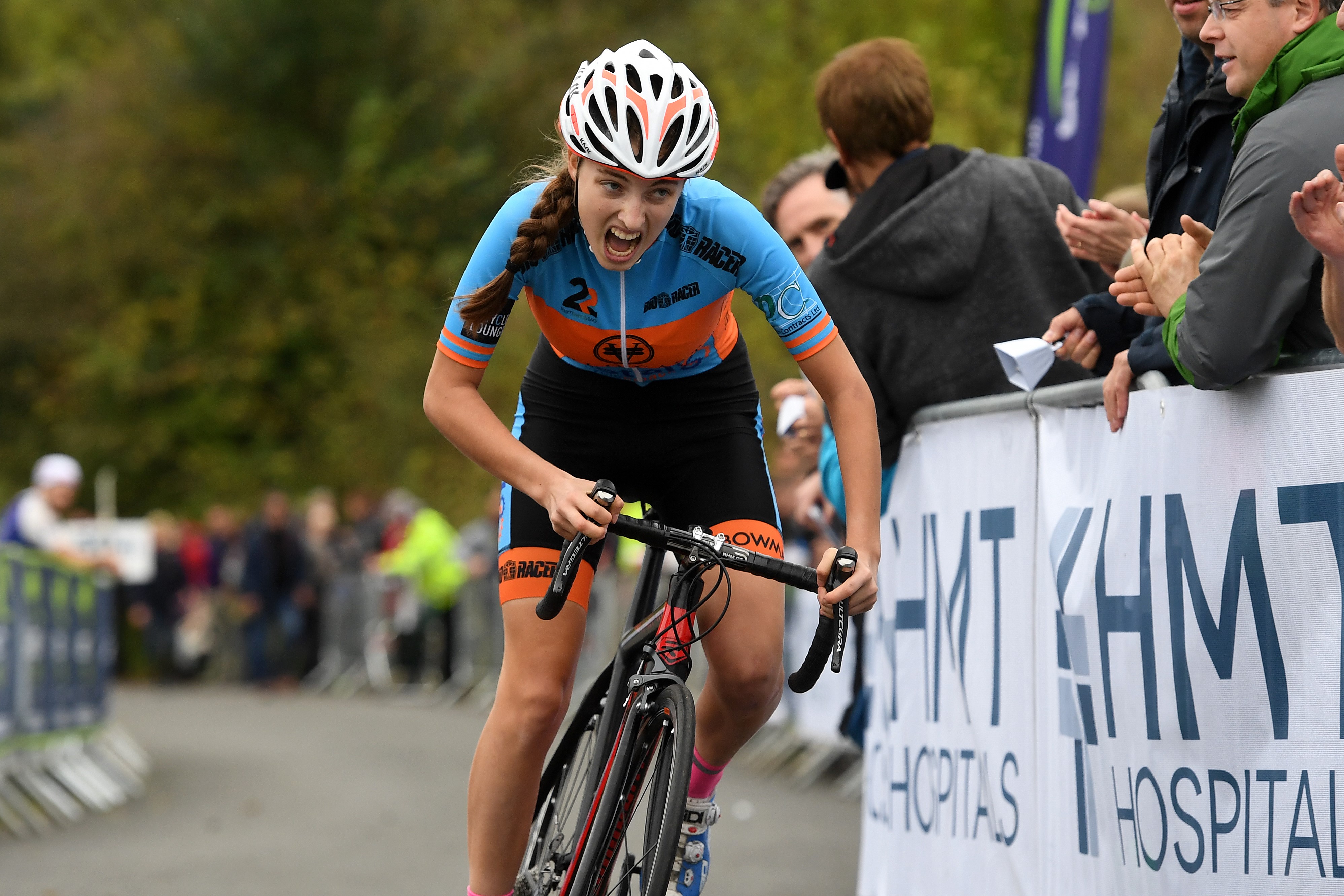Five lactate lies: what lactate means in cycling
Lactate, a compound that accumulates during intense exercise, has for too long been unfairly blamed for pain and fatigue. Here, David Bradford mounts a multi-pronged defence of the maligned metabolite

Everyone has heard of lactate — or lactic acid — and for most of us it conjures up the special type of discomfort brought on by pedalling harder than our legs seem willing to tolerate.
If I had a polka-dot jersey for every hill-beaten cyclist I’ve overheard wheezing on about “lactic burn”, I’d need a bigger spotted jersey drawer than Federico Bahamontes.
>>> How to get better at climbing hills
Blaming lactate in this way is almost entirely unjustified, as this feature will explain, yet the misconception persists — and not only among amateurs.
“I heard a British pro rider, a former national champion, interviewed after a multi-lap race that featured a big hill,” recalls physiologist Jamie Pringle. “He said that every time he rode up the hill he was seriously lactating."

Never could you so accurately accuse someone of milking it! Though that anecdote is funny, it reflects a serious misunderstanding: we’re wrongly blaming an innocent metabolite for our pained, panicked urges to stop and give up. Lactate must be acquitted forthwith; it’s time to face the truth, deal with it and, where possible, keep pedalling.
Lactate doesn’t cause pain and fatigue during exercise
Get The Leadout Newsletter
The latest race content, interviews, features, reviews and expert buying guides, direct to your inbox!
This is the trickiest part of lactate’s acquittal, not because it’s guilty but because pain and fatigue are hugely complex areas — and circumstantial evidence has placed lactate so firmly in the frame for so long that we, as cyclist jurors, have become biased.
Let us call upon an expert witness, lactate specialist and orthopaedic cancer surgeon Matthew Goodwin of the University of Utah, who was a protégé of the lactate guru L. Bruce Gladden, who built on the work of the god of lactate research George Brooks.
“Lactate would be a long way down my list of factors that cause fatigue,” says Goodwin. “There is very little evidence for such an association, despite it being commonly assumed.”
The assumption arises from the belief that lactate contributes to rising levels of acidity within exercising muscle, which is known as acidosis and is caused by an increased concentration of hydrogen ions. Though it is true that the formation of lactate may contribute to a fall in pH, the extent to which rising acidity causes fatigue is far less clear-cut.
>>> What is Vo2 and how to train it
“It is super-complicated,” admits Goodwin. “Much of the early research hinting that pH was a causative factor in fatigue was fatally undermined as soon as they corrected for temperature and ran the tests at body temperature.” Pringle agrees, and provides his own explanation for the stubborn persistence of lactate’s undeserved reputation as a cause of fatigue.

“It’s one of the easier metabolites to measure; physiologists and sports scientists have been measuring it routinely since the Sixties. Inorganic phosphate, potassium and other chemicals in the blood and muscle which are related to fatigue — in some cases, far more strongly — are really hard to measure, so people simply don’t.”
He also points out that many racing cyclists take sodium bicarbonate before events, which makes the blood more alkaline, allowing the muscle to release more lactate to the blood, and in fact allows a greater peak lactate to be achieved; if more lactate were harmful to performance, this would be counter-productive.
>>> What is FTP and how to train it
“It’s mostly used in sprinting, but I’ve seen successful use of sodium bicarbonate in long-distance time triallists racing over an hour, particularly on challenging courses.”
Further mitigating evidence for lactate has been accrued by simply injecting it into people and seeing what happens. “If you take a resting human and start giving them lactate at 2mmol or 4mmol, it’s not as though they all of a sudden start burning or feeling fatigued. They feel fine,” says Goodwin.
Lactate is a fuel, not a waste product
The most misguided view of lactate is that it is little more than a waste product that accumulates during hard exercise, causing pain and misery like a corrosive toxin. This could not be further from the truth, as Goodwin explains.
"The reality is that lactate itself is half a glucose molecule; it’s a three-carbon molecule that’s readily taken up by pretty much every cell in the body and used as a fuel. That’s one important reason why it just doesn’t fit as an agent that would cause fatigue.”
During exercise, lactate is produced during glycolysis — a process by which glucose is broken down to produce energy (more on this later) — and it
was traditionally thought that all of the resultant lactate was transported in the blood to the liver, to be converted back to glucose. Science has since shown that lactate is far more useful and versatile than that.
>>> How to train for endurance
"We now know that lactate has many other fates,” says Goodwin. “In fact, lactate serves as a very important fuel for many if not most tissues of the body, something that is now well known in exercise physiology circles and is slowly spreading to the rest of medicine and the public.”
That’s right, lactate research is one area in which exercise science is leading the way, rather than, as is more usually the case, playing catch-up. (In fact, Goodwin’s current work under Dr Kevin Jones at the University of Utah is focused on exploring the role lactate plays in fuelling cancer.)
“Lactate produced by exercising muscle is taken up and used as a fuel by both local and distant tissues; specifically, tissues like the heart, other skeletal muscles and even the brain.”
Thus, the lactate your hard pedalling produces and pushes out of cells into your bloodstream does not uselessly accumulate and cause your muscles to burn; on the contrary, it’s shuttled around your body to fuel other tissues, allowing you to power on through despite feeling as though your physical reserves are running low. Such is the potency of lactate that it is believed to be responsible for maintaining consciousness — and even life — in people whose glucose levels fall perilously low.
“We recently published a case report with Dr Nijsten from the Netherlands, who had a patient walk into the emergency room with a blood glucose level of around 13mg/dL, which usually causes coma,” says Goodwin. Normal blood glucose is 70-100mg/dL, while normal resting lactate is around 1-2mmol/L.
“How was this person still able to walk and talk? It caused a lot of headscratching. Long story short, this patient’s lactate was measured at 25mmol/L, and when we reviewed the case multiple times it appeared that utilising lactate was the way this guy lived.”
Lack of oxygen is not the principal cause of lactate accumulation
Lactate is produced during anaerobic glycolysis — when glucose is broken down, without oxygen, to form pyruvate and then energy. However, contrary to another common misconception, this does not mean that lactate is only produced when oxygen supplies are running critically low.

“Early, highly influential experiments in this area noted that lactate accumulates if oxygen is lacking — but this is often the exception rather than the rule in the human body,” explains Goodwin. “The real revolutionary in this story is probably not me or Brooks or Gladden, but Wendell Stainsby, a Florida professor who in the late-Sixties showed that the contracting, lactate-releasing dog muscle was not hypoxic [lacking oxygen]. This paved the way for a new way of thinking about lactate.”
Of course, low oxygen does necessitate the production of lactate — because demand for energy exceeds the supply capacity of aerobic respiration (breaking down glucose with oxygen). But this is not the principal reason why lactate figures in such an important way during exercise.
“When you look at exercising humans, the increase in lactate is multi-factorial,” says Goodwin, “but lack of oxygen would be low on the list as a causative agent.”
In Goodwin’s view, more influential than low oxygen in explaining increased lactate levels during exercise are: 1. the increased demand for energy as workload increases; 2. the surge in power-boosting hormones that restrict lactate removal by constricting blood vessels; and 3. the increased recruitment of more fast-twitch muscle fibres which by their very nature rely more on lactate-producing energy generation.
“Low oxygen may come in at fourth on the list, if at all,” Goodwin says.
Lactate does not cause post-exercise muscle soreness
This is perhaps the most prevalent myth but also the easiest to dispel. Far too many cyclists have been misinformed into believing that lactate ‘pools’ in the muscles after a hard ride, leading to soreness and stiffness the next day. Furthermore, they believe that the solution is to use special warm-down and recovery techniques to ‘flush out’ lactate from their muscles. These people are wrong, worrying unduly and wasting their time.

“It is true that blood lactate peaks around five minutes after a 60-90-second bout of all-out effort,” says Goodwin, “but it naturally subsides to normal levels within two hours, regardless of whether you perform a thorough low-intensity cool-down or simply sit and relax.”
Given that muscle soreness usually occurs 24-48 hours after hard exercise, it makes no sense to blame lactate.
The second prong of lactate’s defence in response to this charge is that the types of exercise most liable to result in soreness are short-duration activities that do not bring about an especially big rise in lactate levels, for example, eccentric contractions in weightlifting. It’s believed that this type of soreness is more likely caused by micro-damage to muscle tissue and the subsequent repair process.
“Active cool-down may have other benefits,” Goodwin concludes, “but you can rest assured that lactate will quite swiftly return to normal levels whether you follow a post-exercise protocol or simply sit down and relax.”
You don’t need to test your lactate level to train effectively
Despite all the myths, using lactate as a metric in training is still effective and widely used by top endurance coaches. Even so, there are limitations in testing blood lactate as a means of establishing precise training intensities.
“When you measure lactate with a finger-prick test, that measurement is probably two minutes late, i.e. after what has happened in the muscle,” explains Pringle. “We can only measure it in the muscle currently by using an interstitial sensor, but you’re not going to do that routinely. Testing the blood is actually quite a blunt measurement. What’s going on in the muscle is far more volatile and influenced by many different factors.”

The USA swimming team actually stopped measuring lactate clearance at competitions after they consulted with Goodwin’s old mentor L. Bruce Gladden.
“He [Gladden] told me he wasn’t sure what he had said but that soon after his conversation with them, they did away with the testing,” Goodwin explains.
USA Swimming’s report on its decision concludes: “Because there is no relationship between blood lactate clearance and fatigue, none of the testing information helped us determine if an athlete was recovered, or not.”
To reiterate, training at lactate turn-point is undoubtedly effective and is a vitally important component for endurance athletes (see boxouts); it’s just that establishing the exact blood concentration figure is not straightforward, as Goodwin explains.
“Everyone’s lactate concentration at lactate turn-point is a little bit different. For some people, that value is 2mmol/L, while for others it’s as high as 4.5-6mmol/L. So you can’t use one number, and that complicates things.”
Goodwin underscores that the term ‘lactate threshold’ refers to the oxygen consumption or the work rate, not the actual lactate concentration.
Using blood lactate as a metric requires continual, personalised monitoring, and is therefore impractical for most nonprofessional cyclists.
“You need to plot a curve for each athlete to figure out what the lactate concentration is at turn-point,” says Goodwin, “and the problem with that is they are probably constantly improving throughout the year. It’s not straightforward to use as a training tool, and there are other ways to do it.
“When coaching, I would always judge it on levels of intensity, and I feel like people are pretty good at guesstimating the level of effort that coincides with their lactate turn-point.”
Ultimate lactate threshold session
Physiologist and coach Jamie Pringle describes his favourite lactate turn-point workout
“My favourite session for working on lactate turn-point has a 1:2 work-to recovery ratio: you do 20secs at just above lactate turn-point, then 40secs at just below. You do this continuously for 20mins — going just above turn-point and just below, in a controlled, precise, and hopefully not too fatiguing way."
Explainer: lactate-related jargon
Lactate threshold 1
(AKA: LT1)
This is the point at which blood lactate first begins to rise — slowly and by a small degree — as the workload increases and notable changes occur in muscle-fibre types being recruited. Depending on the individual’s fitness, this threshold coincides with 50-70 per cent of maximal aerobic capacity (i.e. fairly easy pace). When exercising at just above this threshold, lactate concentration in the blood rises by a small amount, from around 1mmol/L to around 2mmol/L and thereafter remains steady.
In practice… This is a suitable pace for general, moderate-effort training rides of up to around three hours in duration. Recovery and longer rides should be conducted at below this first lactate threshold.
Lactate turn-point
(AKA: lactate threshold 2 or LT2, functional threshold, maximal lactate steady or MLSS, onset or blood lactate accumulation or OBLA).
This is the critical threshold; above this blood lactate level, which falls anywhere between 2-6mmol/L depending on the individual. Although onset of blood lactate accumulation (OBLA) was originally defined as 4mmol/L, research has since shown that the actual onset point varies widely between individuals. Above turn-point, the concentration of lactate increases suddenly and exponentially; power may remain steady for a while but lactate will continue to rise.
Lactate turn-point intensity is the exertion level an athlete is able to sustain for around one hour. It coincides with 80-90 per cent of maximal aerobic capacity, and is characterised by Pringle as “comfortably hard but hardly comfortable”.
In practice… Training at this intensity is one of the most effective ways to raise your lactate turn-point and thus increase the speed at which you’re able to contest events lasting 30-60mins. However, this is a taxing level of effort; too much time at lactate threshold may lead to overtraining.
Lactate clearance
(AKA: lactate shuttle)
As you get fitter — partly by training at lactate turn-point — your body becomes more efficient at transporting and recycling lactate. “Clearing the metabolic backlog in the muscle allows the metabolism upstream to run a little bit faster,” says Pringle. “If you can get more lactate into the blood, you can keep that pathway running faster for longer, increasing the efficiency with which lactate is used readily as a fuel in other organs and muscle tissue, and recycled back to glucose in the liver.”

Thank you for reading 20 articles this month* Join now for unlimited access
Enjoy your first month for just £1 / $1 / €1
*Read 5 free articles per month without a subscription

Join now for unlimited access
Try first month for just £1 / $1 / €1
Founded in 1891, Cycling Weekly and its team of expert journalists brings cyclists in-depth reviews, extensive coverage of both professional and domestic racing, as well as fitness advice and 'brew a cuppa and put your feet up' features. Cycling Weekly serves its audience across a range of platforms, from good old-fashioned print to online journalism, and video.
-
 'I'll take a top 10, that's alright in the end' - Fred Wright finishes best of British at Paris-Roubaix
'I'll take a top 10, that's alright in the end' - Fred Wright finishes best of British at Paris-RoubaixBahrain-Victorious rider came back from a mechanical on the Arenberg to place ninth
By Adam Becket Published
-
 'This is the furthest ride I've actually ever done' - Matthew Brennan lights up Paris-Roubaix at 19 years old
'This is the furthest ride I've actually ever done' - Matthew Brennan lights up Paris-Roubaix at 19 years oldThe day's youngest rider reflects on 'killer' Monument debut
By Tom Davidson Published